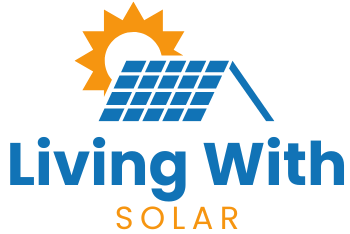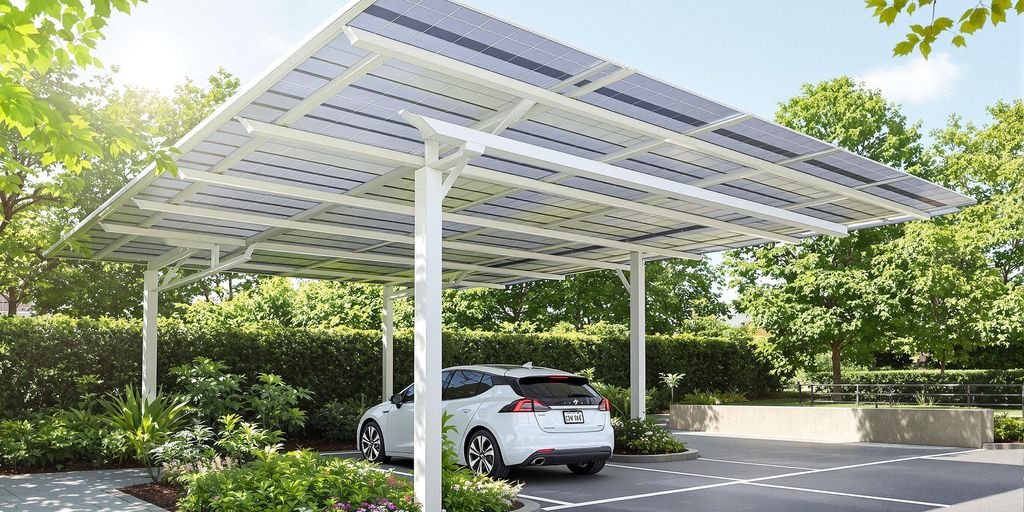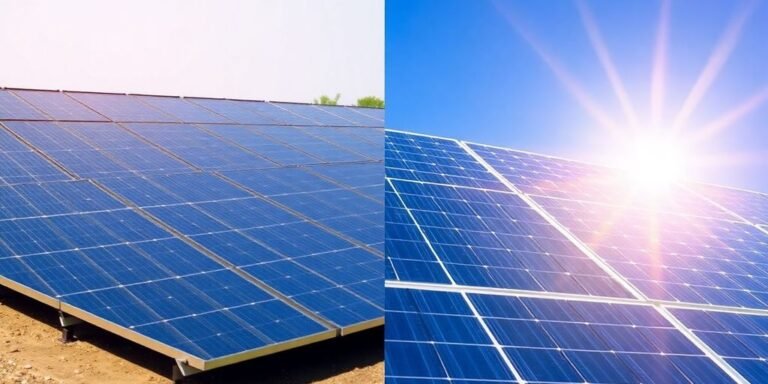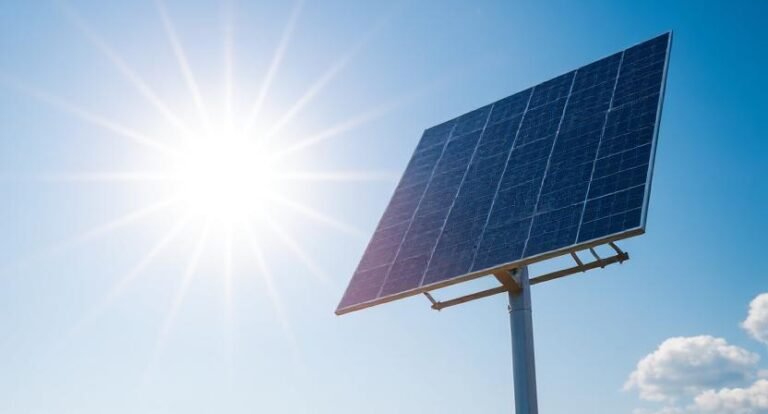Ever thought about turning your parking space into an energy generator? That’s basically what a solar carport does. It shelters your car and produces solar energy. This makes it a great two-in-one solution for homeowners and businesses.
A solar carport can help you save on energy costs, protect your vehicle, and use your space better. It’s worth considering. Let’s break it down and see why this could be a smart move for you.
Key Takeaways
- A solar carport combines a parking shelter with solar panels to generate electricity.
- It’s a great alternative if your roof isn’t ideal for solar panel installation.
- Solar carports can help lower energy bills while offering protection for your vehicle.
- They maximize space by turning parking areas into energy-producing zones.
- Adding features like EV chargers can make them even more functional.
Understanding the Basics of a Solar Carport
What Makes a Solar Carport Unique
A solar carport does more than just provide parking. It generates clean energy and uses outdoor space effectively. A solar carport differs from a regular carport because it has solar panels on the roof.
This feature transforms a simple structure into a source of energy. It’s special because it blends utility and sustainability. It provides shade and generates electricity.
How Solar Carports Differ from Rooftop Panels
Rooftop solar panels go on your home’s roof. In contrast, solar carports are separate structures.
You don’t need a good roof to install them. This is great for homes with shaded or oddly shaped rooftops.
Also, solar carports are easier to reach for maintenance. They can be tilted just right to catch the most sunlight, unlike fixed rooftop setups.
Here’s a quick comparison:
Feature
- Solar Carports
- Installation Location: Over parking spaces
- Accessibility: Easy
- Angle Adjustability: Flexible
- Space Requirements: Additional space
- Rooftop Panels
- Installation Location: On house rooftops
- Accessibility: Difficult
- Angle Adjustability: Limited
- Space Requirements: No extra space
Key Components of a Solar Carport
Building a solar carport involves a few critical elements:
- Solar Panels: These are the heart of the system, capturing sunlight and converting it into electricity.
- Support Structure: Usually made of steel or wood, this forms the framework and holds the panels in place.
- Inverters: They convert the DC electricity generated by the panels into AC electricity that can power your home.
- Wiring and Connections: Ensures the electricity flows from the panels to your home or the grid.
A solar carport is more than just a parking spot—it’s an investment in renewable energy and a step toward a greener future.
If you’re considering one, brush up on solar carport basics to ensure it’s the right fit for your needs.
Benefits of Installing a Solar Carport
Energy Savings and Efficiency
A major benefit of a solar carport is the chance for big energy savings. Generating your own electricity can help reduce high utility bills. It also makes your costs more predictable over time.
As electricity rates keep going up, managing your energy costs can really help. Plus, solar carports are designed to maximize sunlight exposure, ensuring optimal energy output.
A solar carport can be angled just right for efficiency. This is better than rooftop panels, which may face limits from roof angle or shading.
Protection for Your Vehicles
A solar carport doesn’t just produce energy—it also doubles as a protective shelter for your vehicles.
This structure protects your car from sunlight, heavy rain, and snow.
It may not provide complete garage security, but it does shield your car’s paint from UV rays. Plus, it helps keep the interior cooler in summer.
Consider it a practical boost that helps your car stay in great shape. It also works hard to produce clean, renewable energy.
Maximizing Space Utilization
For those who are tight on space, a solar carport is a smart way to make the most of what you have. You don’t have to install panels on your roof or use ground space for a solar array. Instead, you combine energy production with parking, which you already need.
This dual-purpose design is great for homeowners and businesses. It helps them make the most of their property. It’s a win-win: you get covered parking and a renewable energy source all in one.
How Solar Carports Work
The Role of Solar Panels in Carports
Solar carports have panels on a canopy. They capture sunlight and produce electricity. These panels sit on a frame that also acts as a parking shelter, unlike rooftop systems.
This dual-purpose design makes them efficient for both energy production and vehicle protection. The panels convert sunlight into direct current (DC) electricity. Then, they use an inverter to change this into alternating current (AC) for home use.
Connecting to Your Home’s Energy System
Once the solar energy is converted to AC, it is integrated into your home’s electrical system. This connection lets you power appliances. You can also charge devices or send extra energy back to the grid. This works only if your system supports net metering.
Many setups also include battery storage, so you can save energy for nighttime or cloudy days. Proper wiring and installation are essential. They help the system run smoothly and safely.
Optimizing Sunlight Exposure
Positioning is everything when it comes to solar carports. To boost efficiency, panels are often tilted. This helps them capture more sunlight throughout the day. Installers look at things like shade from trees or buildings. They also consider the sun’s angle in different seasons. This careful planning ensures your carport generates as much energy as possible year-round.
Solar carports are a smart way to combine practicality with sustainability. They’re not just about going green—they’re about making the most of the space and sunlight you already have.
Factors to Consider Before Building a Solar Carport
Cost and Budgeting
Building a solar carport isn’t cheap, so you’ll want to figure out how much you are willing to spend upfront.
The costs can vary widely depending on the size, materials, and complexity of the system.
Remember to include extra costs, such as permits and possible trenching for electrical connections.
Make a list of what you need, get multiple quotes, and compare them carefully. It’s also smart to check for any tax credits or rebates that might help offset the cost.
Local Regulations and Permits
Before you break ground, find out what local rules apply. Some areas have strict zoning laws or require specific permits for solar installations. Check with your city or county offices to avoid fines or delays. If you live in an HOA neighborhood, you must get their approval for the project. It’s better to get all this sorted out early than to deal with headaches later.
Choosing the Right Location
The placement of your solar carport is key to its success. Ideally, it should be in a spot that gets plenty of sunlight throughout the day. Shaded areas or spots far from your home’s energy system can cause inefficiencies. They may also increase installation costs. Evaluate your property and pick a spot that gets plenty of sunlight. This choice will also help you save on costs, like long electrical runs.
Building a solar carport is a big decision, but with careful planning and research, it can be a worthwhile investment. Start by understanding your needs and limitations, and you’ll be on the right track.
Comparing Solar Carports to Other Solar Solutions

Solar Carports vs. Ground-Mounted Panels
When it comes to solar carports versus ground-mounted panels, the main difference lies in space efficiency.
Solar carports fit into spaces like driveways and parking lots. Ground-mounted systems require their own dedicated areas. This dual-purpose design allows you to protect your vehicles while generating electricity.
Key Differences:
Feature Solar Carports Ground-Mounted Panels Space Usage Built over parking spaces Requires a separate land area Cost Slightly higher due to structural setup Typically lower Vehicle Protection Yes No
Advantages over traditional rooftop systems
Rooftop solar panels are a popular choice, but they come with their own set of challenges. Rooftops usually have limited space.
They can also face shading problems from nearby trees or buildings. Solar carports solve these problems.
They go up in open areas, which means they get plenty of sunlight. Also, they don’t depend on your roof’s strength. This matters a lot if your roof is old or not great for solar panels.
Advantages of Solar Carports over Rooftops:
- No need for roof inspections or reinforcements.
- Easier to access for maintenance.
- Can be scaled up without worrying about the roof size.
When a solar carport is the better choice.
So, when does a solar carport make the most sense? If you’re someone who has limited roof space, owns electric vehicles, or simply wants a multi-functional setup, a solar carport might be your best bet.
They’re especially good for homeowners with wide driveways or businesses with big parking lots.
Solar carports combine functionality and energy efficiency, making them a practical choice for those looking to maximize their investment in solar energy.
Environmental Impact of Solar Carports
Reducing Carbon Footprint
Installing a solar carport does more than generate electricity. It helps lower your carbon footprint.
Solar panels produce clean energy, which means they don’t emit harmful greenhouse gases like fossil fuels do.
Switching to solar energy is one of the simplest ways to combat climate change. Plus, every kilowatt-hour of solar power generated offsets the need for energy from polluting sources like coal or natural gas.
Supporting Renewable Energy Goals
Solar carports are a step toward a sustainable future. Using the sun’s power helps boost the move to renewable energy worldwide.
This reduces air pollution and supports bigger environmental goals. For example, it helps boost the share of renewables in our energy mix. It’s a small choice that adds up when more people make it.
Sustainable Design Features
Most solar carports are designed with sustainability in mind. They often use eco-friendly materials. They also combine parking with energy production to make the most of land use. Efficient use of space is a big win for urban areas where land is limited. Some designs include rainwater management systems. These systems direct water away from vehicles and into collection systems for reuse.
Choosing a solar carport isn’t just about saving money—it’s about making a statement that you care about the planet and future generations.
Customizing Your Solar Carport

Design Options and Aesthetics
When it comes to tailoring your solar carport, the design is where you can truly make it your own. You can choose a minimalist style with clean lines or a more decorative look to match your home. There are many options available. Materials like wood, aluminum, and steel allow for flexibility in both appearance and durability.
Think of your solar carport as an extension of your home’s personality. You can even choose colors or finishes that match your existing structures.
Incorporating Electric Vehicle Charging
If you have an electric vehicle or plan to get one, a charging station in your solar carport is a smart choice.
This setup saves you time and makes the most of the electricity generated on-site. Many systems support smart charging.
This lets you control when and how your EV charges. You can keep your energy costs low, too. It’s like turning your carport into your personal fueling station.
Scalability for Future Needs
Planning for the future is key. You only need a small setup now, but what about five years down the road? Scalability ensures your solar carport can grow with you.
Designing with flexibility helps you avoid expensive upgrades later. You can add more panels, expand the structure, or upgrade to newer technology when needed. This way, your carport evolves as your needs change.
Conclusion
In the end, a solar carport is more than just a place to park your car. This method creates clean energy and adds extra features to your property.
A solar carport can help you save on electricity bills, cut your carbon footprint, or use your space more wisely. Sure, it’s not for everyone, but if it fits your needs, it’s worth considering.
Take some time to weigh the costs, benefits, and your specific situation, and you might find that a solar carport is exactly what you’ve been looking for.
Frequently Asked Questions
What is a solar carport?
A solar carport offers shade and protects vehicles. It also generates electricity with solar panels on the roof.
How does a solar carport differ from rooftop solar panels?
Solar carports are different from rooftop panels. They are standalone structures that offer parking space and capture solar energy.
Can a solar carport power my home?
Yes, you can connect the electricity from a solar carport to your home. This helps power your appliances and lowers your electricity bill.
Do I need a permit to build a solar carport?
Most areas require permits for building a solar carport. Always check with your local authorities to ensure compliance with regulations.
Is a solar carport worth the investment?
A solar carport is a good investment. It helps you save on energy costs. Plus, it protects your vehicles and maximizes your space. It is especially beneficial if your roof is not suitable for solar panels.
Can I charge my electric vehicle with a solar carport?
Yes, many solar carports have EV charging stations. This lets you charge your electric vehicle using solar energy.





